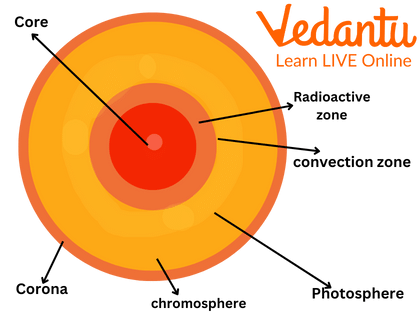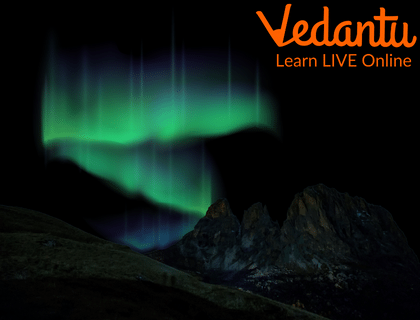




Introduction to Sunspots
The sun is the main source of light on the earth, it is also responsible for providing heat energy. If you observe the sun through a telescope, you will spot some dark areas on its surface. What do you think these are? They can be either small dark spots or large dark spots and are usually uneven and irregularly shaped. These areas or regions on the sun’s surface are known as Sunspots. Sunspots can be defined as the fine dark spots on the surface of the sun that are simply areas that have high and intense magnetic activity and thus these spots are capable of releasing a large amount of energy. In this article, we will study these dark sunspots, and their effects and state some fun and interesting facts about them.
What are Sunspots?
Sunspots are defined as large, dark and irregularly shaped spots that occur on the surface of the Sun. They occur in the photosphere region of the Sun. The photosphere is the visible surface of the sun from which most of the sunlight is emitted that reaches the Earth. These spots are lower in temperature than the surrounding surface temperatures. They are observed over regions of intense magnetic activity and huge amounts of energy are released from them. This energy results in the formation of Solar flares and Solar winds. The reason that Sunspots are relatively cool is that they form in areas with intense magnetic activity. These magnetic fields are so strong that they prevent the heat within the sun from reaching the surface. The magnetic field in such areas is about 2,500 times stronger than Earth’s.

Sunspots

Anatomy of the Sun
Effects of Sunspots
There are a lot of effects of sunspots that can be seen on the Earth or can be observed from it. Sunspots are responsible for the formation of Solar flares and Solar winds. They are also responsible for the Aurora formation. An increase in the number and size of sunspots also directly affects the Earth’s temperature. As they increase, they cause increased temperatures on the Earth which has negative implications for the climate and the environment. Radio Blackouts are also caused by Sunspots.
What are Solar Winds?
The solar wind is a stream of protons and electrons from the outermost atmosphere of the Sun called the corona. The charged particles that are emitted breeze through the solar system at speeds of around 250 miles(400 kilometres) per second to 500 miles(800 km) per second, in the state of plasma.
When the solar winds reach the Earth, they interact with its magnetosphere and produce vibrant and glowing aurora displays in the north and south poles. The aurora at the North pole is called the aurora borealis and the aurora at the south pole is called the aurora australis. Eugene Parker, an astrophysicist, was the first person who proposed the existence of solar winds. He put forward his theory in 1957 when he realised that the corona of the sun which is superheated should emit charged particles at high speed in theory.

Aurora
Facts About Sunspots
Some interesting facts about sunspots are:
Sunspots were first observed telescopically by Thomas Harriot, Johannes and David Fabricius in 1610 AD.
A sunspot is temporary and not permanent. It can last and be seen from days to weeks or months and it is also capable of travelling across the solar disk.
When two sunspots appear in the same region, it is called the sunspot group or the Active region.
Sunspots can vary in size from being several times larger than Earth(some as large as 50000 km in diameter) to being minuscule enough to observe by telescopes extremely difficult.
Sunspots typically consist of two regions called Umbra and Penumbra. The Umbra region is the dark region and the Penumbra region is the surrounding lighter region.

Umbra and Penumbra Region
Sunspot cycles last for 11 years. After each cycle, their numbers increase and then gradually start reducing.
Summary
Sunspots are interesting phenomena that occur on the surface of the sun. They are dark irregular-shaped spots that occur in the photosphere region of the Sun as a result of intense magnetic activity. They are responsible for several effects ranging from the formation of solar flares and solar winds to the formation of auroras in the polar regions of the Earth.
Learning by Doing
1) What is the inner dark region of the sunspot called?
Umbra
Penumbra
Photosphere
None of the above
Ans: a) Umbra
2) The aurora at the North pole is called the aurora ________ and the aurora at the south pole is called the aurora _________.
Ans: Borealis, Australis.
Solved Questions
1) Who proposed the existence of Solar winds first?
Ans: Eugene Parker
2) Who first observed the existence of sunspots?
Ans: Thomas Harriot, Johannes and David Fabricius in 1610 AD.
FAQs on Facts about Sunspots
1. What exactly are sunspots?
Sunspots are temporary dark areas that appear on the Sun's surface, which is called the photosphere. They appear dark only because they are cooler than the surrounding areas. These spots are regions of intense and complex magnetic activity on the Sun.
2. What is the main cause of sunspots appearing on the Sun?
Sunspots are caused by powerful magnetic field lines from the Sun's interior breaking through the surface. This strong magnetic force slows down the normal flow of hot gas from inside the Sun, making the spot's temperature drop relative to its surroundings. This cooler area emits less light, making it appear as a dark spot.
3. How long does a typical sunspot last?
The lifespan of a sunspot can vary significantly. Smaller, individual sunspots might only last for a few hours. In contrast, larger and more complex sunspot groups can be much more stable, lasting for several days or even months as they rotate with the Sun.
4. What is the sunspot cycle?
The sunspot cycle, also known as the solar cycle, describes the periodic change in the number of sunspots. This cycle has an average length of about 11 years. During this time, the number of sunspots increases from a low point (solar minimum) to a high point (solar maximum) and then decreases back to a minimum.
5. Why do sunspots look dark if they are still extremely hot?
This is an excellent question that deals with perception. Sunspots are not actually dark or cold; they are still incredibly hot, with temperatures around 3,500°C. They appear dark only because of the sharp contrast with their surroundings. The rest of the Sun's photosphere is much hotter (around 5,500°C), making it intensely bright. By comparison, the cooler sunspots emit less light and therefore look dark against the brilliant background.
6. How can sunspot activity affect us here on Earth?
The intense magnetic activity associated with sunspots can cause major solar events like solar flares and coronal mass ejections (CMEs). If these powerful bursts of energy and particles are directed towards Earth, they can:
- Disrupt satellite communications and GPS signals.
- Damage electrical power grids.
- Create beautiful auroras (the Northern and Southern Lights) when they interact with Earth's atmosphere.
7. Can you explain what sunspots are using a simple analogy?
Certainly. Imagine the Sun as a big pot of boiling water. The bubbles are usually moving around very fast. A sunspot is like a 'cool spot' in the pot where the water isn't bubbling as much. It's not cold, just cooler than the rest of the boiling water around it, so it looks different. These cool spots are temporary and are caused by the Sun's magnetism.
8. Is it safe to view sunspots from Earth?
It is extremely dangerous to look directly at the Sun without proper eye protection. You should never use regular sunglasses, binoculars, or a telescope. The only safe way to observe sunspots is by using special-purpose solar filters designed for telescopes or by projecting the Sun's image onto a white surface, a technique known as pinhole projection.
9. How do scientists count or measure sunspots?
Scientists track solar activity by systematically counting both the number of individual sunspots and the number of sunspot groups. This data is then used in a formula to calculate the official sunspot number. A higher number indicates greater solar activity. This counting method helps them monitor the Sun's behaviour and track the 11-year solar cycle.
10. Do other stars in the universe also have spots like our Sun?
Yes, many other stars exhibit similar phenomena called starspots. Like sunspots, these are caused by strong magnetic activity creating cooler, darker regions on a star's surface. Studying starspots on distant stars helps astronomers understand that magnetic cycles are a common feature of stars and provides insight into how they work under different conditions.









